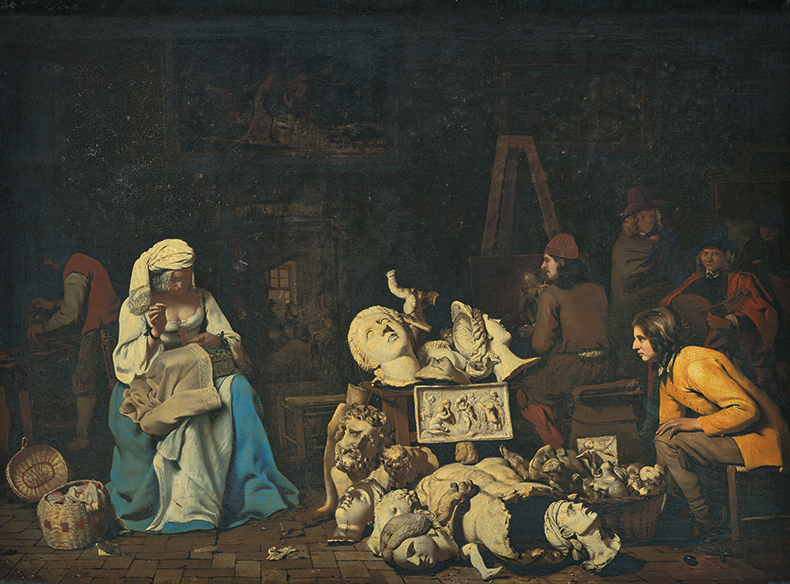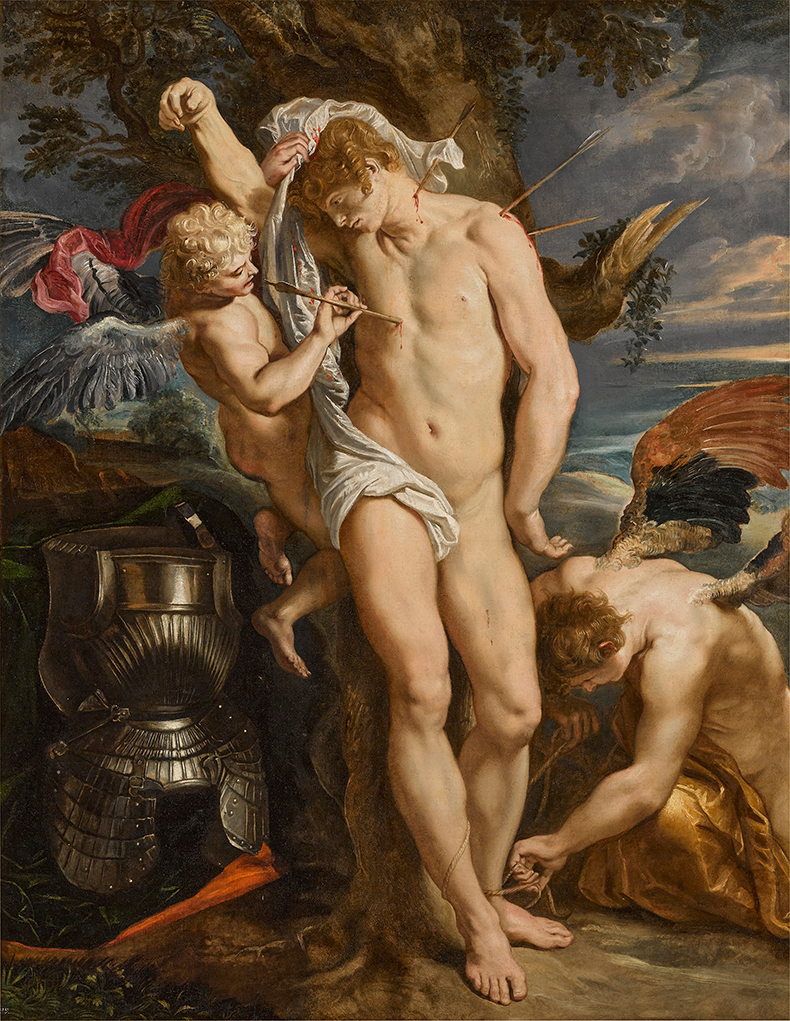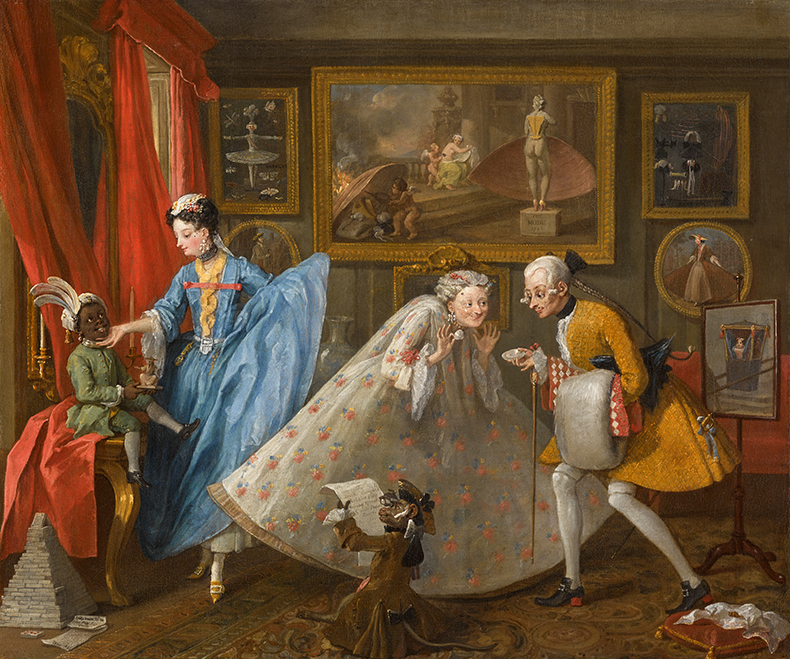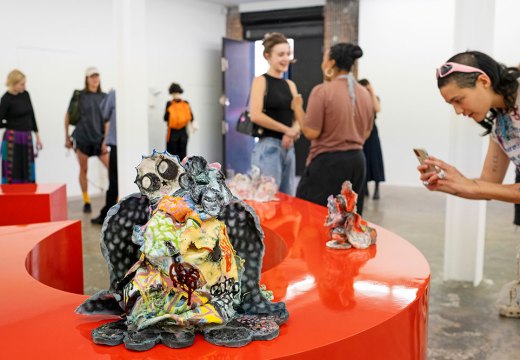What is happening in London? For the past few years, this question has dogged every auction here. The headlines from the modern and contemporary sales in late June largely focussed on the new record set by the selling of an unfinished late Klimt for £85.3m, but if you take that out of the results, the picture was far bleaker. Christie’s auctions were down 67 per cent on 2019 and Sotheby’s had a similarly lacklustre showing, with only an 84 per cent sell-through rate.
As the contemporary market has become the dominant force, auction houses have – to a degree – turned their back on Old Masters and turned away from furniture sales. Even 20 years ago, these sales dotted the calendar; they kept the lights on, even if they didn’t supply any fireworks. Slowly, they became consolidated into ‘marquee events’. Now, if collectors of these categories want to buy from Sotheby’s and Christie’s, they have to wait for the dedicated weeks that occur twice a year in New York and twice in London.
To a degree, it looks like the strategy is working. This month in London, Christie’s achieved its strongest sales since 2016. Its evening sale was particularly strong, largely because it fielded two of the most exciting lots of the season. The first was The Artist’s Studio with a Seamstress (c. 1646–49) by Michael Sweerts (1618–64). This newly discovered and richly detailed painting, untouched and on its original stretcher – even with the original nails – shows young artists at work while a woman sews on the right-hand side of the painting. Despite the accretion of centuries of dirt, her thread still glistens in the light. Its whereabouts had been unknown before this appearance at auction – the squash teacher of a specialist at the auction house phoned to say his mother had this painting in the attic; could they just take a look? It sold for £12.6m, six times over its low estimate.

The Artist’s Studio with a Seamstress (c. 1646–49), Michael Sweerts. Christie’s London, £12.6m
The other discovery to energise the market was Rembrandt’s pendant portraits of Jan Willemsz. van der Pluym and Jaapgen Carels, signed and dated 1635. During the view, these small works glowed on the dark wall of the auction room. Despite their size, the vivacity of the artist’s style – his extraordinary ability to render character in paint – was clear to see. They are the last known pair of portraits in private hands and sold for £11m.
Sotheby’s fared less well. The Bond Street auction house had put its marketing energy behind Rubens’ Saint Sebastian Tended by Two Angels – but it was hard to shake the memories of the much better painting, Portrait of a Man as Mars (c. 1625), which was displayed in London before selling in New York’s modern sale in May for $26.2m. Nonetheless, Saint Sebastian achieved £5m, firmly in the middle of its estimate.

Saint Sebastian Tended by Two Angels (1630), Peter Paul Rubens. Sotheby’s London, £5m
Possibly the biggest disappointment was the Hogarth painting that had come up for sale. Taste in High Life (1742) had been owned by the renowned collector of British art, Edward Cecil Guinness, 1st Earl of Iveagh (1847–1927), before passing by descent to the seller. It shows a lavishly satirical scene of the beau monde in a drawing room, in thrall to French fashion to the point of absurdity. It’s a magnificent image of folly that prefigures Marriage à la Mode (1743–45), which Hogarth painted shortly after he completed this work.
There is no doubt that the depiction of a Black boy being petted like a toy is troubling to a contemporary audience. This might explain why the work sold on a single irrevocable bid for £2.5m rather than being pushed past expectations. Then again, perhaps buyers are just getting fed up with all the guarantees and irrevocable bids that timid auction houses are lining up – Christie’s was noticeably lighter on these tools. Overall, Sotheby’s failed to sell 35 per cent of its 125 lots.

Taste in High Life (1742), William Hogarth. Sotheby’s London, £2.5m
There is an anxiety about finding new collectors to buy at auction. Christie’s made great play of the fact that 36 per cent of new registrants to their sales were millennials – which suggests that the hope lies with younger collectors (although millennials are not as young as they were, now creeping into their middle age). A specialist at Christie’s said to me that the desultory results from the contemporary sales showed that London had returned to the time before the explosion of this market in the late 1990s, fuelled by foreign investment. We are now settling into something slightly more domestic and staid.
If hopes are being pinned on younger collectors, maybe the auction houses need to think about how they present what they are offering. Can they expect an ingenue collector to accept that an auction covers 600 hundred years of art history? Might they not be looking for something that is more tightly focussed and edited? It used to be that auction houses over-used the word ‘curate’, but curation now seems to be the very thing auctions are missing. Maybe it’s time to break down the Old Master sales into something new – demarking sales by periods so that people are more aware of what they’re looking at. Hogarth understood that to be successful in the market you have to give the people what they want. Now might be the time for auction houses to think about what it is that collectors want now, rather than what they used to want.
Unlimited access from just $16 every 3 months
Subscribe to get unlimited and exclusive access to the top art stories, interviews and exhibition reviews.














![Masterpiece [Re]discovery 2022. Photo: Ben Fisher Photography, courtesy of Masterpiece London](http://www.apollo-magazine.com/wp-content/uploads/2022/07/MPL2022_4263.jpg)
It’s time for the government of London to return to its rightful home